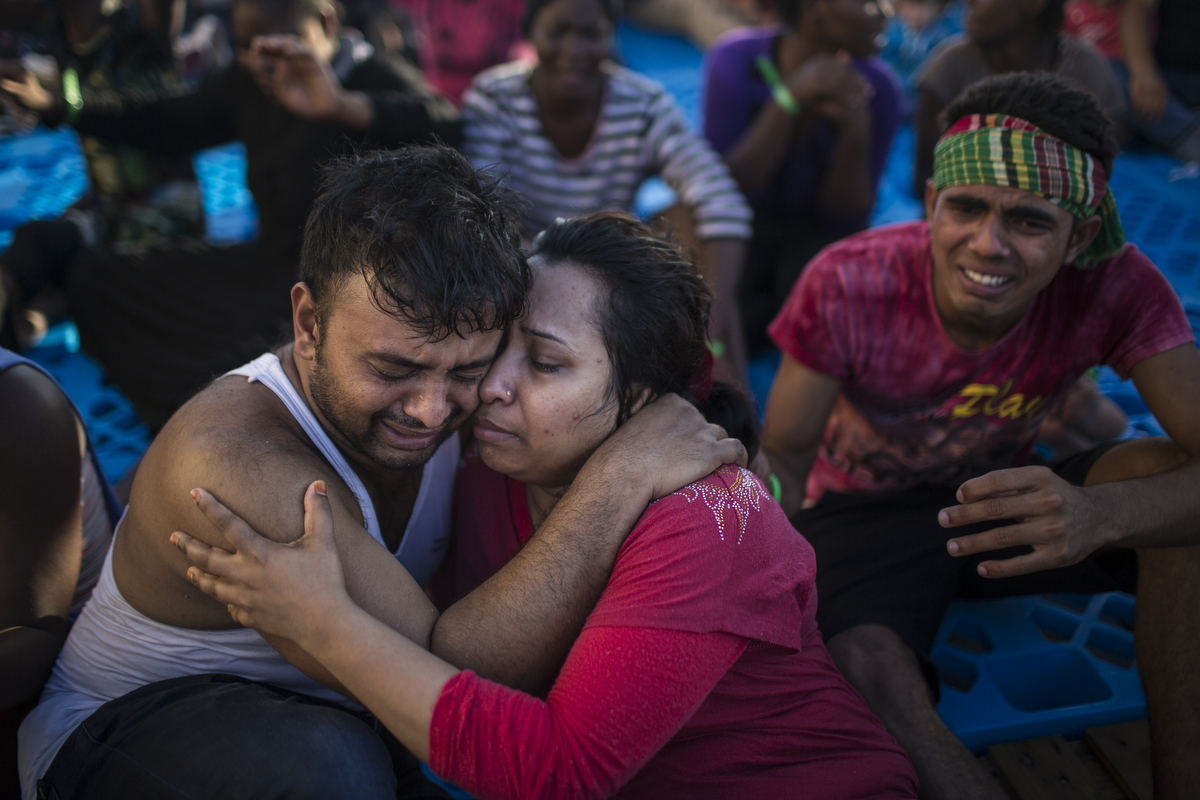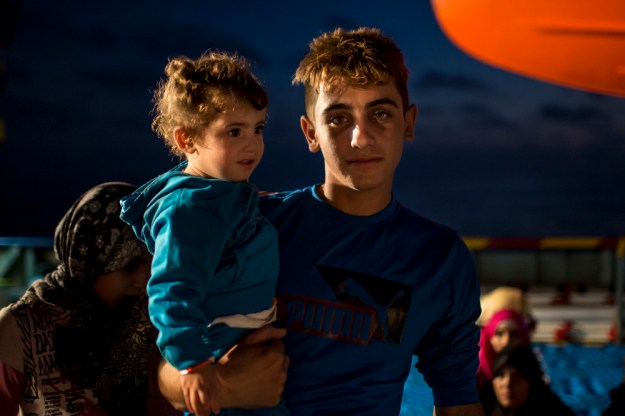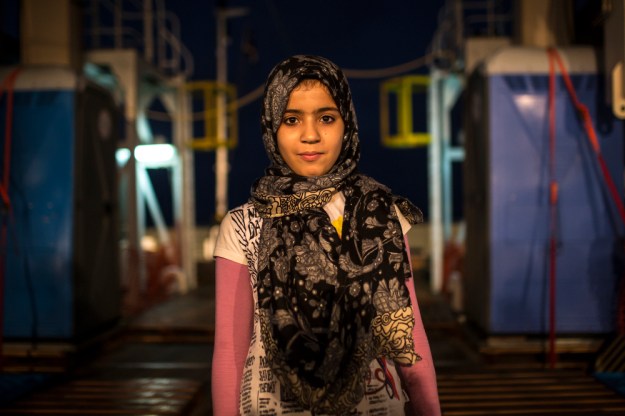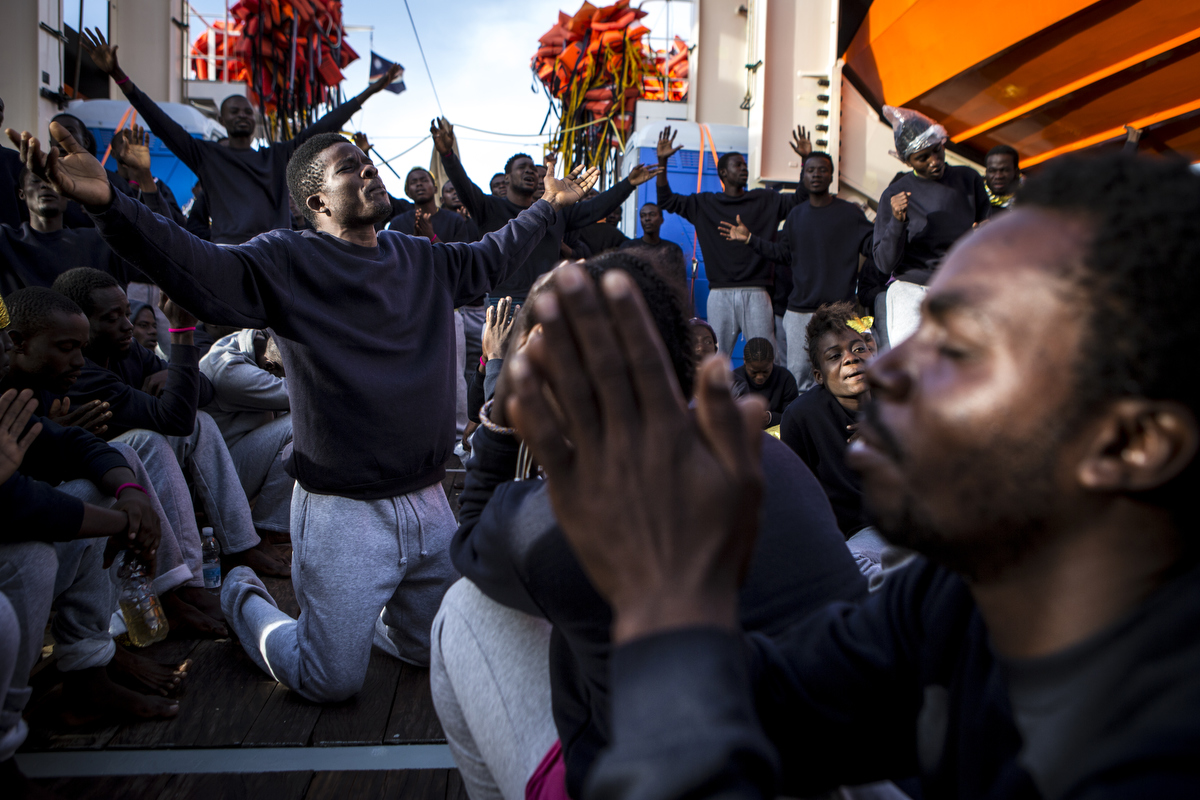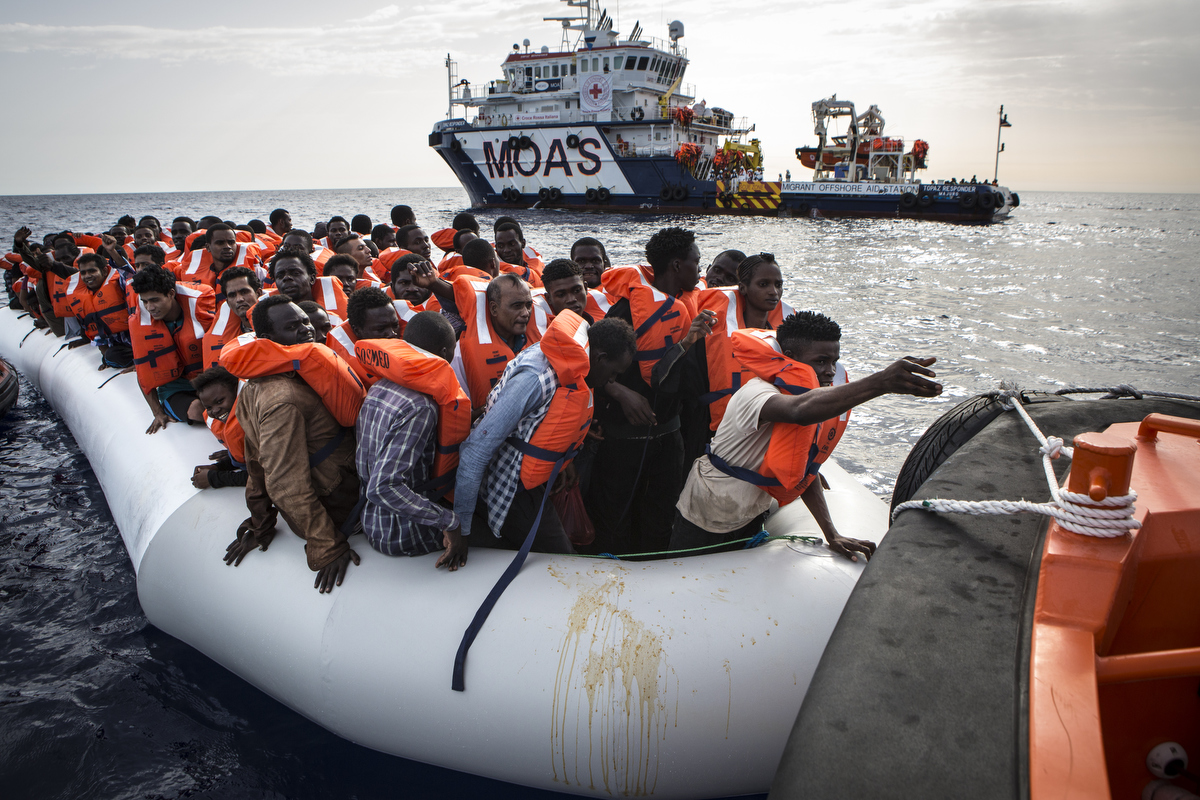The call came before dawn from the Maritime Rescue Coordination Center in Rome. A small wooden vessel containing approximately 25 people was approaching the vicinity. We were patrolling just outside of Libyan territorial waters, about 13 miles north of the city of Sabratha. It was July 28th, 2016, and I had been on board the Topaz Responder for nearly two months.
The crew swiftly got to the vessel’s position and launched the fast rescue boats, armed with a small crew of professional rescuers and hundreds of life jackets. In the small wooden vessel, a family from Tripoli waved and called for help.
An eerie silence descended as our rescue boat approached theirs in the predawn darkness, with only a searchlight illuminating the scene. We called back, told them to stay seated and calm. Our worst fear is people panicking and capsizing the boat. All of them had life jackets, which is unusual of migrants on this route but made the rescuers’ job easier. The search and rescue team leader, who spent 26 years in the Maltese Armed Forces, made contact with the refugees in broken Arabic and told them what was going to happen next.

In a textbook rescue operation, the Topaz carefully inched its massive hull alongside their vessel. Once alongside, the migrants stepped aboard to find a doctor and nurses ready to attend to any medical needs. Fortunately, they were all in good shape. A one-year-old was crying for food but his mother had come prepared and fed him from a full baby bottle she had in her purse. By that time the sun started to rise. The whole rescue had taken less than 40 minutes.
After the family from Tripoli was rescued, we picked up a further 439 migrants that very morning. Then we headed north to Sicily and reached our assigned port of disembarkation 30 hours later.
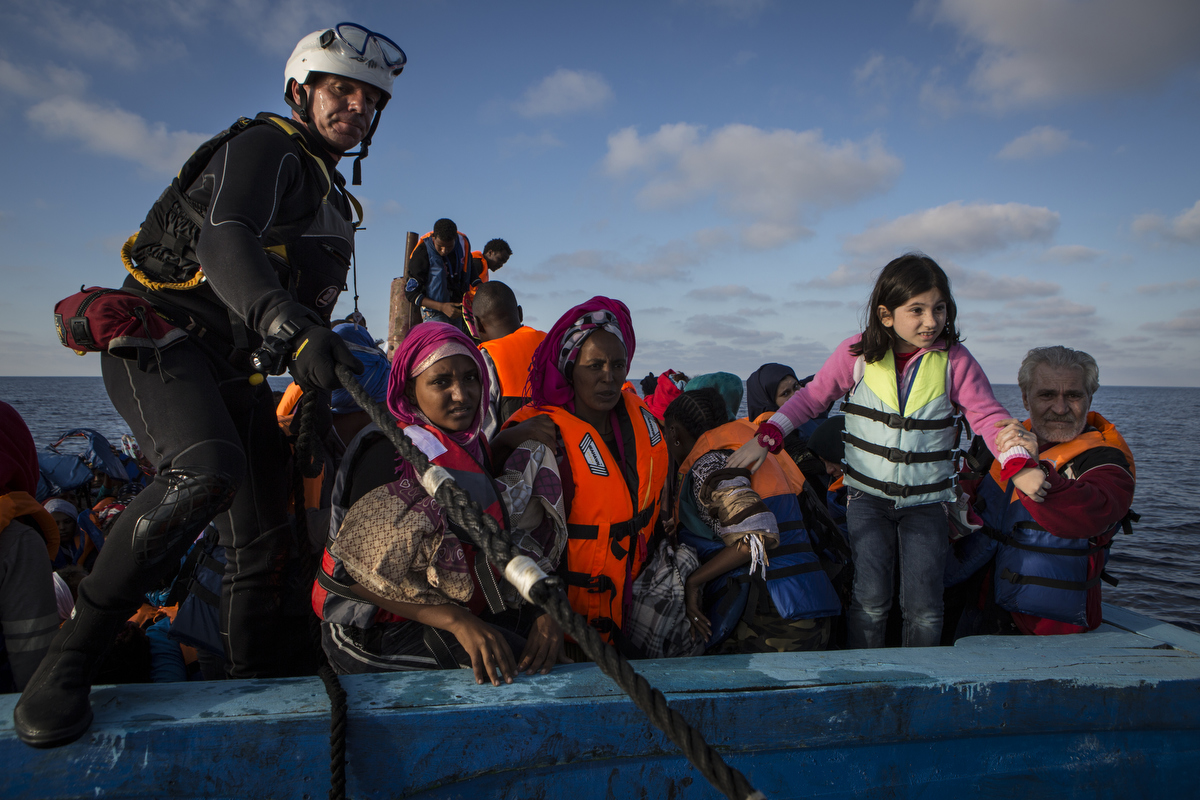
The MOAS (migrant offshore aid station) is a charity based in Malta that has pioneered efforts to prevent the loss of life at sea by patrolling international waters off the Libyan coast since 2013. In May 2016, it launched its two-ship operation in the Mediterranean: the Phoenix, a 40-meter converted trawler, and the Topaz Responder, a 51-meter chartered vessel.
The long stretch of coastline west of Tripoli has become the last stepping stone for migrants wanting to cross the Mediterranean towards Italy. Smuggling routes from as far east as Bangladesh or west as Gambia converge in the Libyan coastal towns of Sabratah and Zuwara. There, after weeks or months of detention in squalid conditions, smugglers cram as many migrants as they can on unseaworthy vessels and send them north, often in the dead of night.
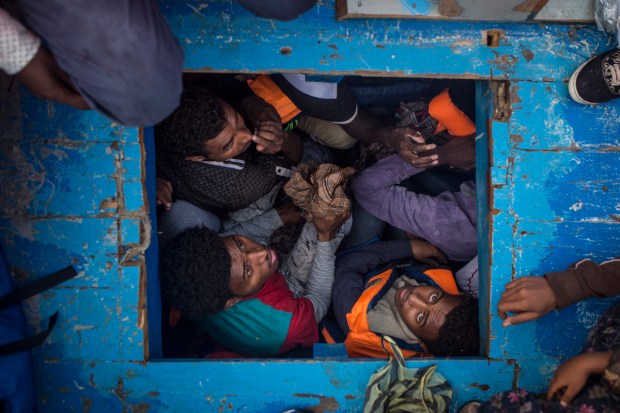
The odds are not in the migrants’ favor. Often without life jackets and with very little water and fuel, they are pushed off the beaches and left to their own devices. This is why NGOs like MOAS operate so close to the Libyans territorial waters; the boats are not equipped to make it all the way to Europe.
The family on board the vessel that day were Libyans of Syrian origin. The patriarch had fled Hafez Al-Assad’s dictatorship in the early 80s and had settled in Tripoli with his wife and two young sons. He had built a relatively successful construction business, his sons had married Libyan women and had many more children and grandchildren, all born and raised in Tripoli. After the civil war began in 2011, the family lost its business. The country wasn’t safe anymore. Like about 300,000 others, they attempted to cross the Mediterranean.
They paid around 1,000 euros per person to a smuggler and got a small, five-meter long wooden fishing boat that had been stripped down to the bare minimum, a small engine, and some fuel. They were also given a satellite phone, a number to call and instruction on how to read GPS coordinates. It may very well have saved their lives.
But many were not as lucky. Over 2,000 people have died while attempting to reach Europe through the Mediterranean Sea. On my very last rescue in November, after an already busy morning rescuing four boats, we got a call saying that a rubber dinghy was deflating and sinking fast. The Spanish Navy was already on the scene. When we got there, the boat was totally deflated and its passengers had spilled into the sea. It was chaos. Around 50 people were in the water, in a state of total panic.
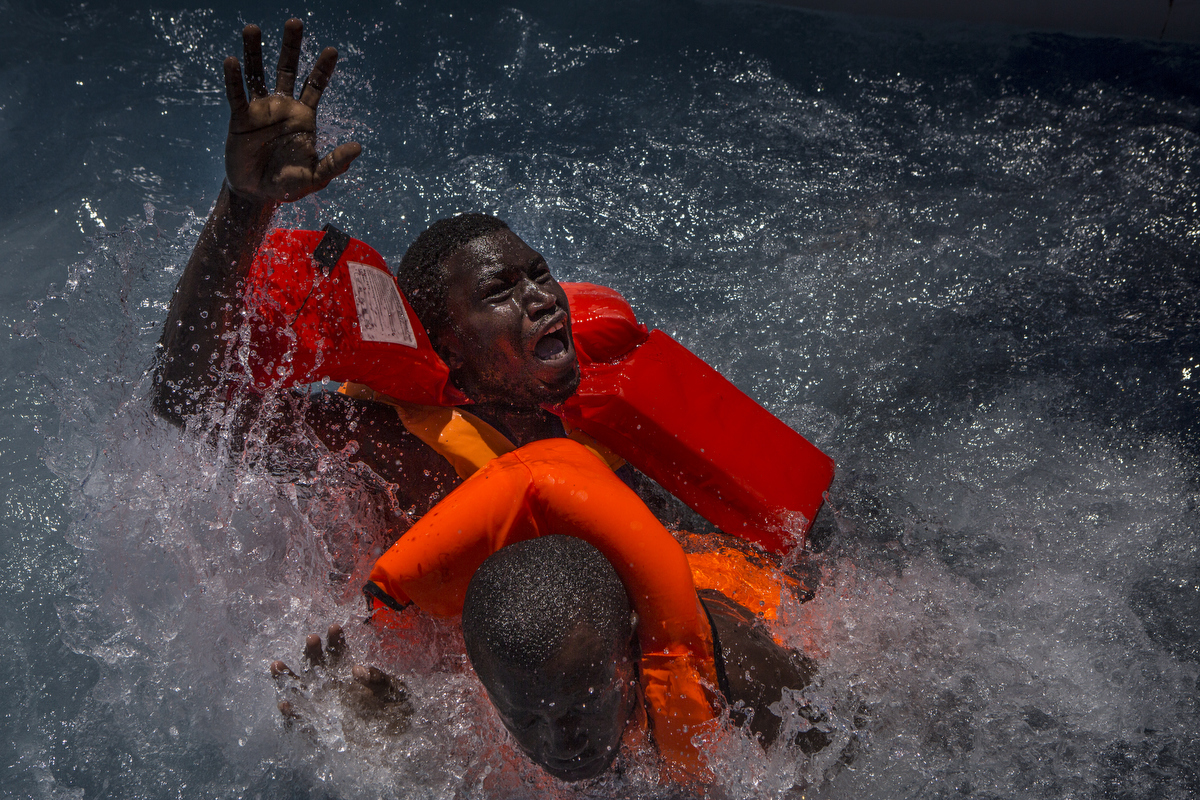
Just one person’s sudden movement, jumping aboard the rescue vessel or lunging to grab a life jacket, can have catastrophic consequences for the overcrowded boats. Rubber dinghies can contain up to 170 people, while some larger wooden boats carry up to 600.
One man was brought to us unconscious. I dropped my cameras and spent 20 minutes assisting the doctor with CPR. He didn’t make it. Three sisters from the Ivory Coast lost both their parents. We saved around 110 refugees that day, but we don’t know how many set off in the final boat we rescued. We don’t know how many people drowned that day.
